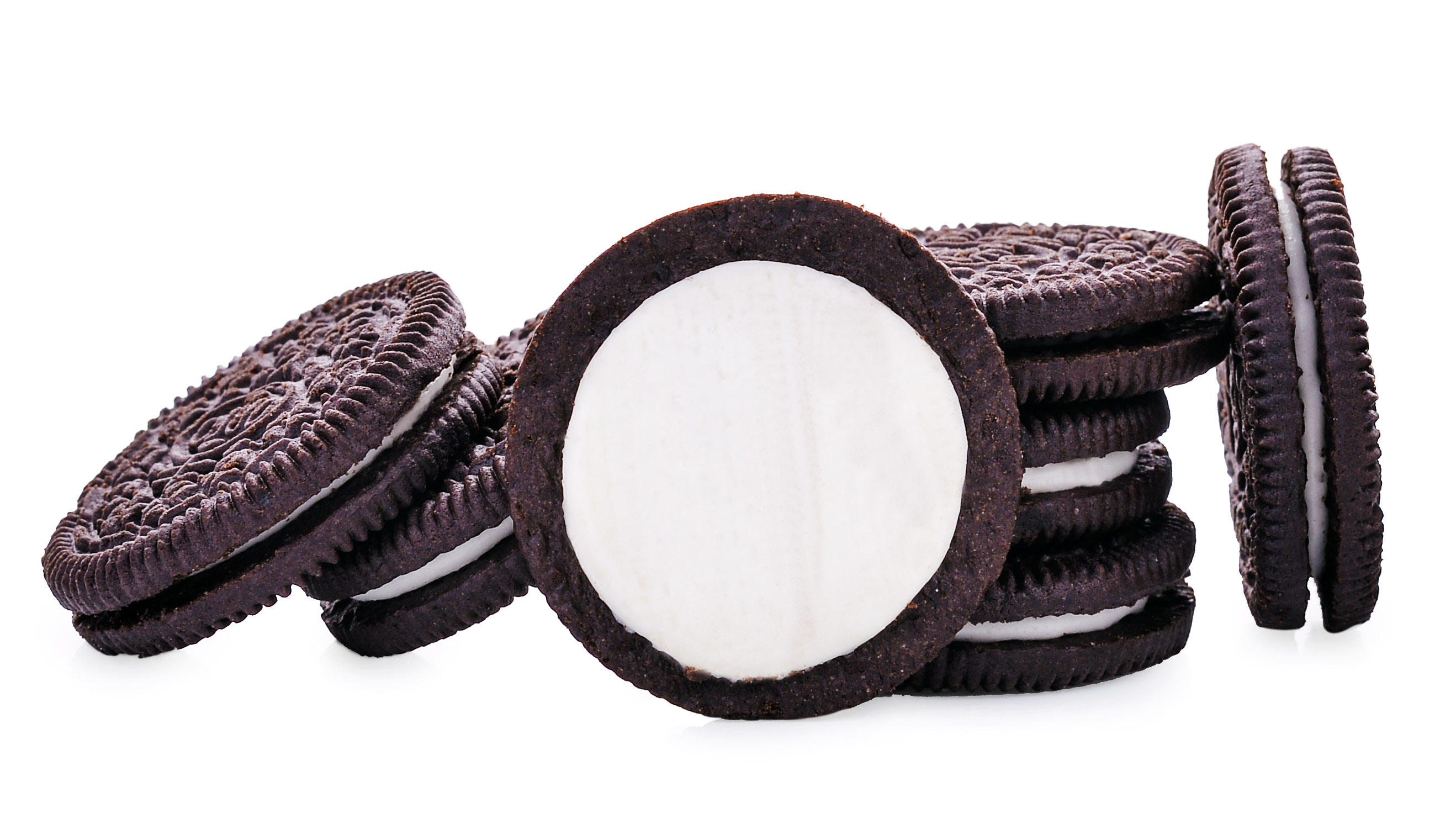As the Oreo turns
Enterprising engineers tested the creamy filling to understand what happens when the sandwich cookie is twisted apart.

It’s an enigma to cookie monsters everywhere: Why does the filling in an Oreo stick to just one wafer when the cookie is twisted open? MIT engineers now think they have the answer.
In their recent paper “On Oreology, the fracture and flow of ‘milk’s favorite cookie,’” PhD candidate Crystal Owens, SM ’17, Max Fan ’23, and mechanical engineering professors Gareth McKinley, PhD ’91, and A. John Hart, SM ’02, PhD ’06, describe how they subjected the cookies to standard tests of rheology, the study of how a non-Newtonian fluid flows when stressed.
The researchers glued a wide variety of Oreos to the top and bottom plates of an instrument known as a rheometer and applied varying degrees of torque and angular rotation, noting the values that successfully twisted each cookie apart. They plugged the measurements into equations to calculate the cream’s viscoelasticity, or flowability. For each experiment, they also noted the filling’s “post-mortem distribution,” or where it ended up on the opened cookie.
The torque required to open an Oreo, they found, is similar to that required to turn a doorknob and about 1/10th what’s needed to twist off a bottle cap. The cream’s failure stress—the force required to get it to deform—is twice that of cream cheese and peanut butter, and about the same as for mozzarella. And neither the flavor nor the amount of stuffing mattered: the cream stuck to one wafer about 80% of the time.
The manufacturing process may be to blame, says Owens: “They put the first wafer down, then dispense a ball of cream onto that wafer before putting the second wafer on top. Apparently that little time delay may make the cream stick better to the first wafer.”
Owens, who regularly uses a rheometer to test materials such as 3D-printable inks, thinks the understanding gained from the properties of Oreo filling could potentially be applied to the design of other materials.
“My 3D-printing fluids are in the same class of materials as Oreo cream,” she says. “So this new understanding can help me better design ink when I’m trying to print flexible electronics from a slurry of carbon nanotubes, because they deform in almost exactly the same way.”
To help others gain their own insights into rheology, the researchers have designed a 3D-printable “Oreometer”—a simple device that firmly grasps the cookie and uses pennies and rubber bands to control the force that twists it open.
But Owens doesn’t expect any amateur studies to solve the filling problem. As the cookies are currently designed, “we found there’s no trick to twisting that would always split the cream evenly,” she concludes.
Keep Reading
Most Popular
Large language models can do jaw-dropping things. But nobody knows exactly why.
And that's a problem. Figuring it out is one of the biggest scientific puzzles of our time and a crucial step towards controlling more powerful future models.
How scientists traced a mysterious covid case back to six toilets
When wastewater surveillance turns into a hunt for a single infected individual, the ethics get tricky.
The problem with plug-in hybrids? Their drivers.
Plug-in hybrids are often sold as a transition to EVs, but new data from Europe shows we’re still underestimating the emissions they produce.
Stay connected
Get the latest updates from
MIT Technology Review
Discover special offers, top stories, upcoming events, and more.